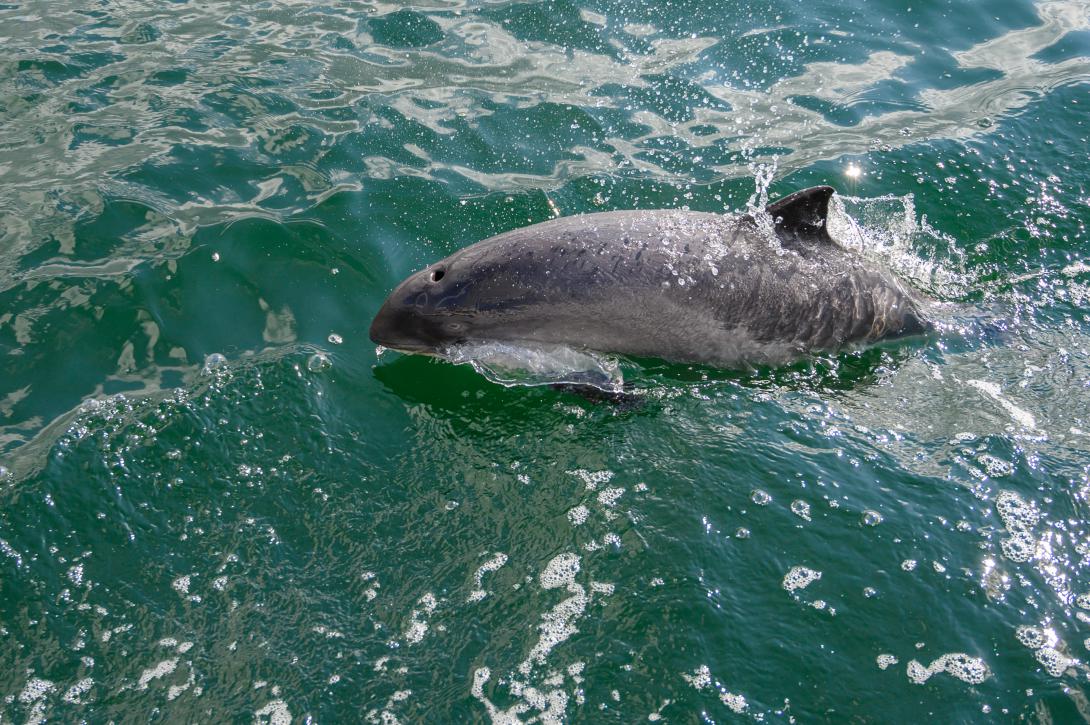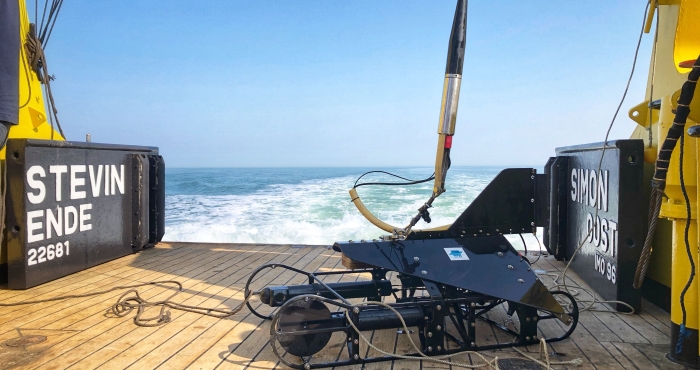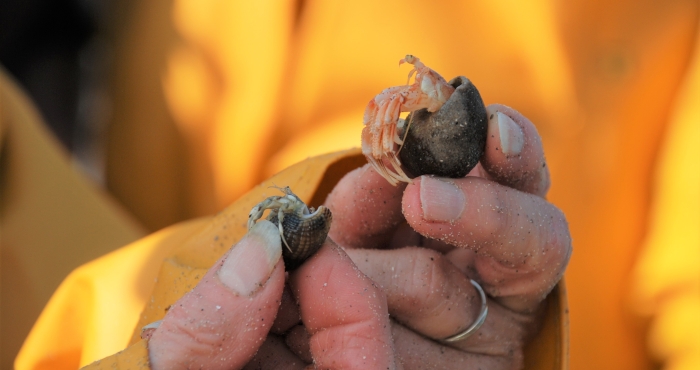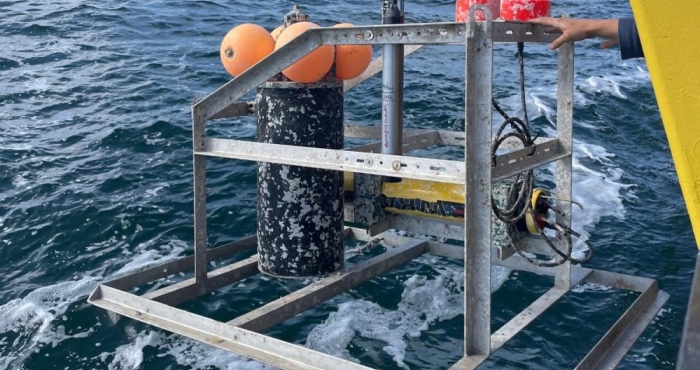
Marine mammals
Toothed whales (Odontoceti) are at the top of the marine food web and play an important role in the marine ecosystem. LifeWatch Belgium passively records their echolocation calls and has built a long-term data series on toothed whales which is essential to understand their habitat use and conservation needs.
Why do we study marine mammals

Marine mammals are at the top of the marine food web; they are an indicator of ecosystem health and are therefore investigated by LifeWatch Belgium. Harbour porpoises (Phocoena phocoena) are considered the smallest and most abundant marine mammals in the North Sea. Porpoises are continuously vocalizing using echolocation. They use echolocation to collect information about their environment, to track their prey and for navigational purposes. A second group of species are the dolphins that can be monitored based on their echolocation.
Passive acoustic monitoring provides a non-intrusive method to observe this group of species in the wild. With this technique in hand, we gain fundamental knowledge on porpoise and dolphin distribution, necessary for an informed management of the species and their environment.
What we do in LifeWatch
TECHNIQUE
As part of the Belgian LifeWatch Observatory, the cetacean passive acoustic sensor network aims to provide a continuous, long-term data series of echolocating cetaceans roaming the BPNS. Porpoises and dolphins (Odontoceti) use echolocation to extract information from their surroundings. Dolphins produce clicks in a wide frequency range which are typically short and loud, while porpoises produce longer and weaker clicks in a narrow frequency range (120 - 145 kHz, mode 132 kHz). These clicks can be recorded by the passive cetacean logger when a marine mammal is swimming in the vicinity of the recorder. The sensor continuously listens for echolocation clicks and once triggered, it stores the parameters of vocalization. This technique is an example of Passive Acoustic Monitoring and is common in porpoise research. The passive cetacean logger records clicks between 20 and 160 kHz including ambient background noise, sonar and other biotic underwater sound. The key to the performance of the passive cetacean logger is detection and classification of series of clicks, so-called click trains. Click trains have distinctive features which are used by the classification algorithms to identify the occurring cetacean species (e.g. harbour porpoise, dolphins).
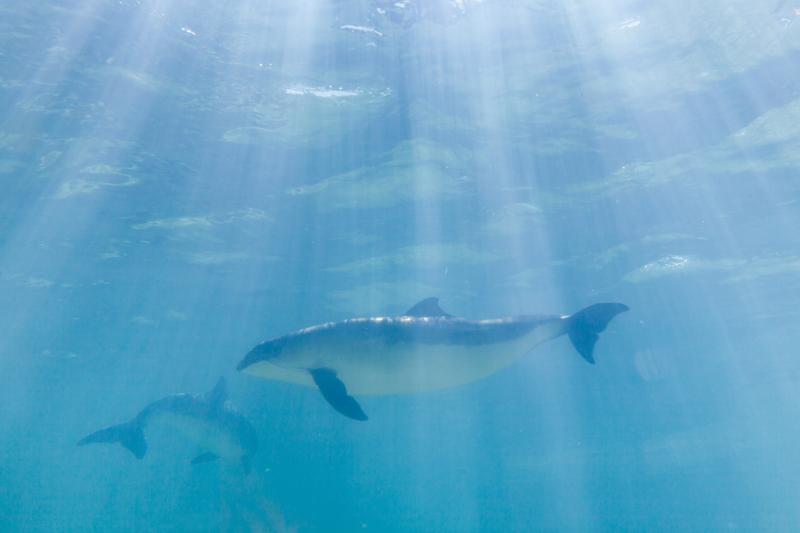
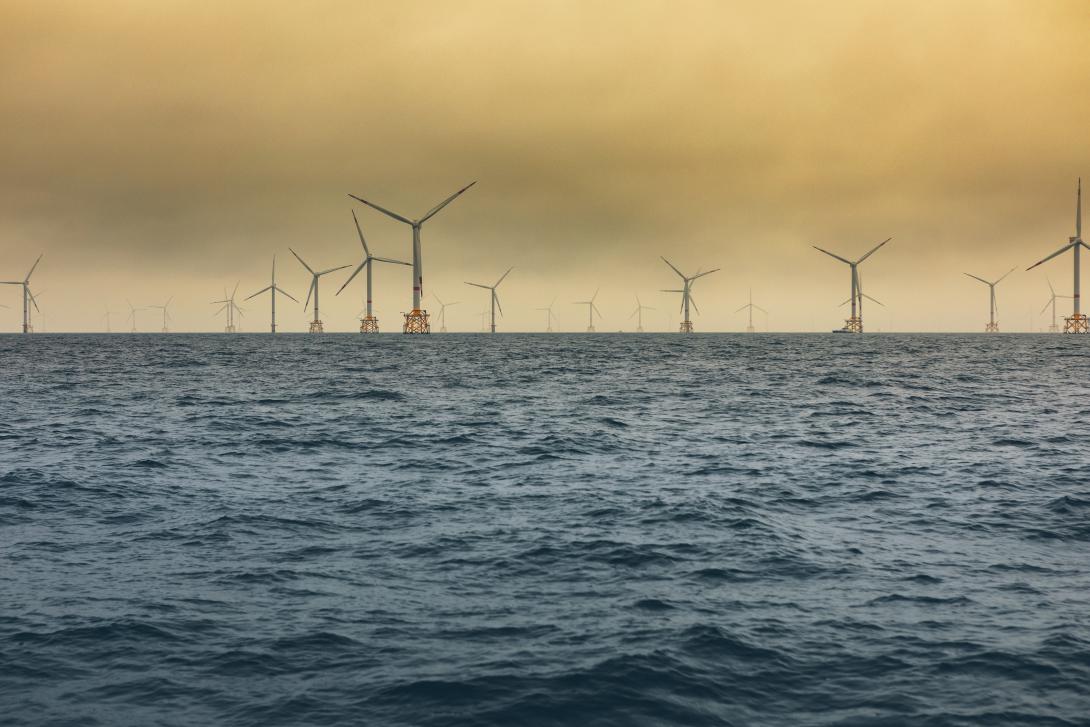
INFRASTRUCTURE
LifeWatch Belgium founded and maintains the permanent network of passive cetacean loggers in the BPNS. The network matured in 2018 after a thorough review of the data and feasibility. The current network consists of eight stations equipped with a bottom -moored tripod holding a passive cetacean logger and an acoustic release system, allowing for the full recovery of the equipment. The acoustic release system also acts as a receiver for acoustic tags, contributing to the LifeWatch fish acoustic receiver network. Stations outside the wind farm zone were relocated towards ship wrecks and are positioned along a an east-west gradient covering coastal, mid-shore and offshore zones of the BPNS.
This network continuously collects data on porpoise and dolphin presence in the BPNS and captures interannual and seasonal changes in their distribution. This is crucial information in a changing marine environment, and to grasp cetacean ecology and conservation needs in the BPNS.
DATA INFRACTRUCTURE
Data management of such a network is crucial for future use of the data. All data gathered are stored in a central PostgreSQL database hosted by VLIZ. All metadata concerning the deployment, retrieval, sensors, and projects is stored as well as the detection of echolocating mammals per minute. The online data repository ‘underwater acoustics’ is part of the European Tracking Network. Data can be visualized, explored and downloaded using the Rshiny application Data explorer and the LifeWatch Data R package.
